There’s so much going on in my garden I almost don’t know where to start. My greenhouse is already heaving with seedlings and the tulips are just starting to bloom in the borders and pots. The amelanchier is flowering and the euphorbias and honesty are making the front garden sing. It’s all happening, and happening fast - especially with these warmer days we’re having - and I want to watch every moment. Blink and you’ve missed the magnolia in full flow or your best tulips have gone over. Savour every minute!
The main focus of this month is seed sowing. I already have plenty of perennials and hardy annuals underway, so this month I’m concentrating on half hardies and veg, in addition to keeping up with the conveyor belt of pricking out, potting on and planting out. I love these tasks, and they can be done in short bursts whenever I have 20 minutes in a lunch break or early evening.
Sowing half hardies
I’m sowing cosmos and more dahlias this week, both of which are really easy to grow (I sowed an earlier batch of dahlias in March which are doing well in the greenhouse). They germinate within three or four days, and grow gratifyingly quickly. I sow both into modular seed trays and then pot these on into 9cm pots within 3-4 weeks, eventually to be planted out in late May or early June. This year I’m using Sylvagrow Organic Compost - a peat free multipurpose compost that can be used for sowing seeds or potting on. I germinate them inside giving them 20-23C of heat to kick start the process (at the moment they are on a rack above the Aga), and then as soon as they have germinated they go out into my unheated greenhouse.
Pricking out
Then all you need to do is keep them well watered. If you sow them in modules, sow two seeds to a module and take out the weaker seedling so you are left with just one. If you sow into an open tray, you’ll need to prick them out. Do this when the seedling has formed its first true set of leaves (the first two leaves are the cotyledons rather than true leaves) but don’t leave it too long otherwise the roots will get tangled, making it harder to pull them apart. I tend to prick things out on the small side rather than leaving them to get too big. Transfer the seedlings into tiny pots or a modular tray - if the seedlings are small, they will get lost in a large pot which can hold too much water within the compost for them to cope with, and they may suffer from root rot.
Potting on
I keep these seedlings in the greenhouse until they have properly established, and then move them outside until they are ready to be planted out, potting on into the next sized pot if necessary. During this stage, keep an eye on them to make sure they aren’t getting pot bound. It’s easy for them to hit a wall if this happens and the cycle of growth can be checked. It can also happen if the nutrients in the compost start to run out. The signs are a weak looking seedling that may start to look yellow or sickly. Pot on immediately and it should pick up again.
Pinching out
For both cosmos and dahlias it can help to pinch out the growing shoots when the seedlings get to about 10cm tall. This stops them from becoming tall and spindly by encouraging side shoots to form - which in turn makes them more sturdy. Also, more shoots mean more flower buds. You can use scissors or snips for this, or simply use your thumb and forefinger to pinch out the juicy new shoot from the centre of the plant. It feels counter intuitive to do it but it really works.
Cosmos varieties
I grow ‘Rubenza’ and ‘Purity’ cosmos every year and always like to try a different one too - this year ‘Rosetta’, which has pale pink semi double flowers with a ruffle of shorter petals in the middle (all from Chiltern Seeds). I prefer the tall, willowy varieties rather than the shorter ones, and use them to slot into my borders to bring in late summer and autumn colour when other things are going over - I check the description on the seed packet carefully and don’t usually go for anything under about 100cm. Shorter varieties like ‘Antiquity’ and the pale yellow ‘Xanthos’ (which grow to about 45cm) are good for pots but look a bit stunted in the borders - and any that you buy from garden centres tend to be short and squat too.
Dahlias
The dahlias I’m growing from seed are a mix of my own collected seed from plants I grew last year and seeds from Marlston Farmgirl, whose original stock came from Erin Benzakine at Floret Flower Farm in the US. I posted about growing dahlias from seed last year - it’s super easy and so exciting to see the variations that pop up, each one completely unique. I also wrote about the results of my seed-grown dahlias in my November post last year, so you can see some of the beauties that resulted from just a handful of seeds (see below). Once again, I’m losing a whole bed in my vegetable garden so that I can devote it to dahlias. I have sowed the Easy-Peasy cut flower mix from Chiltern Seeds into the bed to flower first, and will plant the dahlias when those flowers start to go over. It’s all about maximising space.
While it is effective and fun to grow them altogether like this in one bed, to admire the hotchpotch of colours, I find it trickier to grow them to slot into my borders, as I do with cosmos, as I never know what colours they are going to be. If you are less worried about colours, then they would work well as late summer gap fillers - and I guess you could just cut off the acid yellow flowers or anything that is ruining your existing colour scheme!
Direct sowing hardy annuals
April is the month to direct sow seeds like poppies and nigella that don’t respond well to being sown in trays. I have never been very good at this, tending to scatter the seed randomly around and then forgetting about it. The danger of this is that things can easily be weeded out or dug over if you don’t recognise the seedlings, so it’s probably worth being a little more methodical and careful. The RHS advice on how to sow seeds outdoors is worth reading, with tips on mixing fine seed with sand before broadcasting, or sowing in drills in a carefully prepared bed. I’m about to sow some of the beautiful poppy ‘Amazing Grey’ whose tiny seeds are so precious and difficult to get hold of, so I need to be more careful than my normal scatter-and-see-what-happens approach.
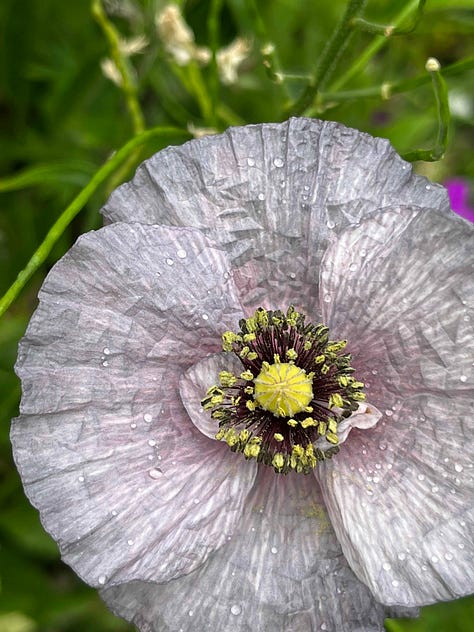


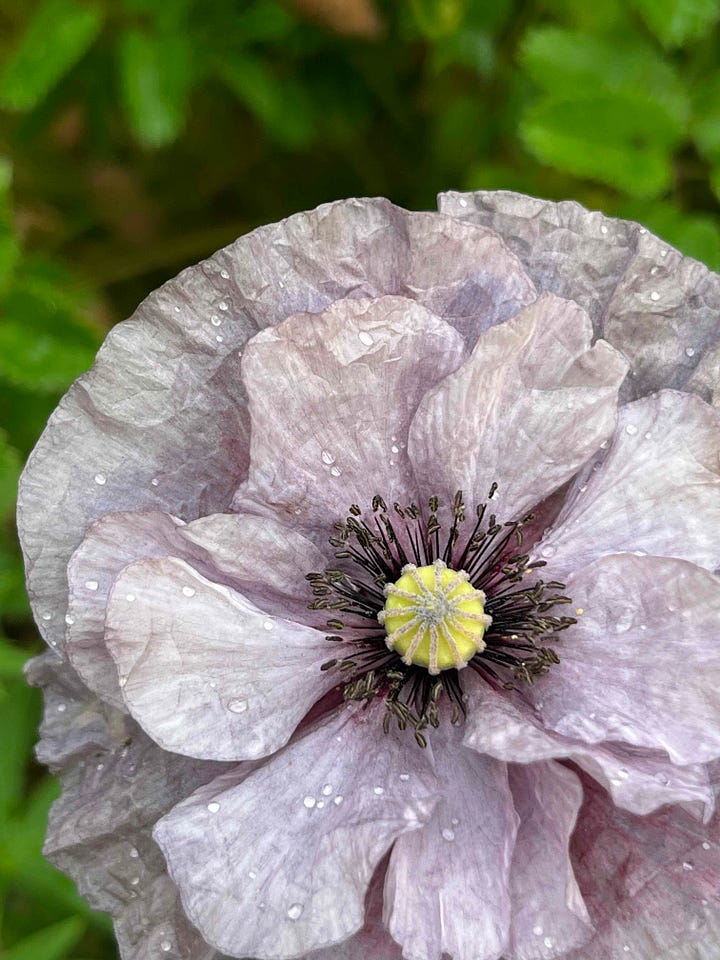

The veg I’m sowing this month
I’ve had to reduce the amount of veg I grow due to the dahlia takeover in the largest raised bed, so I have had to be quite selective about what I grow. I’ve just sown runner beans, dwarf French beans and two types of climbing beans in the greenhouse, which will take up one of the remaining three beds, while lettuce and salad leaves will be sown direct in the long galvanised troughs I use to increase my growing capacity. Mid month I’ll sow courgettes, cucumbers and squash in the greenhouse, to plant outside a month or so later.
Last weekend I sowed four different types of tomatoes from Real Seeds (UK suppliers of open pollinated, really tasty veg including heirlom varieties), which are currently germinating inside the house: ‘Golden Crown’, ‘Blue Beauty’, ‘Dr Carolyn Pink’ and ‘Green Zebra’. But my search for new, different and tasty tomatoes sent me down a rabbit hole and I have just ordered yet more seeds from a company I hadn’t heard of before, Meraki Seeds in Greece, who have an astonishing collection of really unusual tomatoes. So a further four varieties are on their way including the wonderful sounding ‘Black Yum Yum’ and a white variety from Russia called ‘Bolshoi Plombir’. Half the fun of gardening is tracking down and trying these new varieties. (US readers, try TomatoFest).

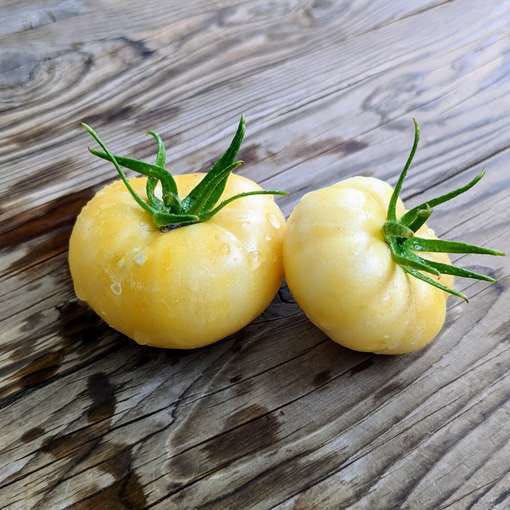
Other garden tasks for April
• plant out sweet peas
• plant summer flowering bulbs
• cut back penstemons and other slightly tender plants such as teucrium
• take basel stem cuttings from perennials or dahlias
• put up supports for climbing beans
• water containers if dry
• top dress or give a liquid feed to perennials or shrubs in containers
If you’re interested in learning more about growing from seed, my new Create Academy course is now available. It’s a straightforward and hopefully unintimidating guide to growing flowers from seed - designed to demystify the whole thing and make it fun. I also wrote a book about the subject, The Flower Garden, which is available from my website.
Have a wonderful weekend in the sun, everyone. And if you happen to be in Cornwall, I’ll be speaking about my book Pastoral Gardens at the Cornwall Garden Society Spring Flower Show on Sunday at 1pm.
Clare





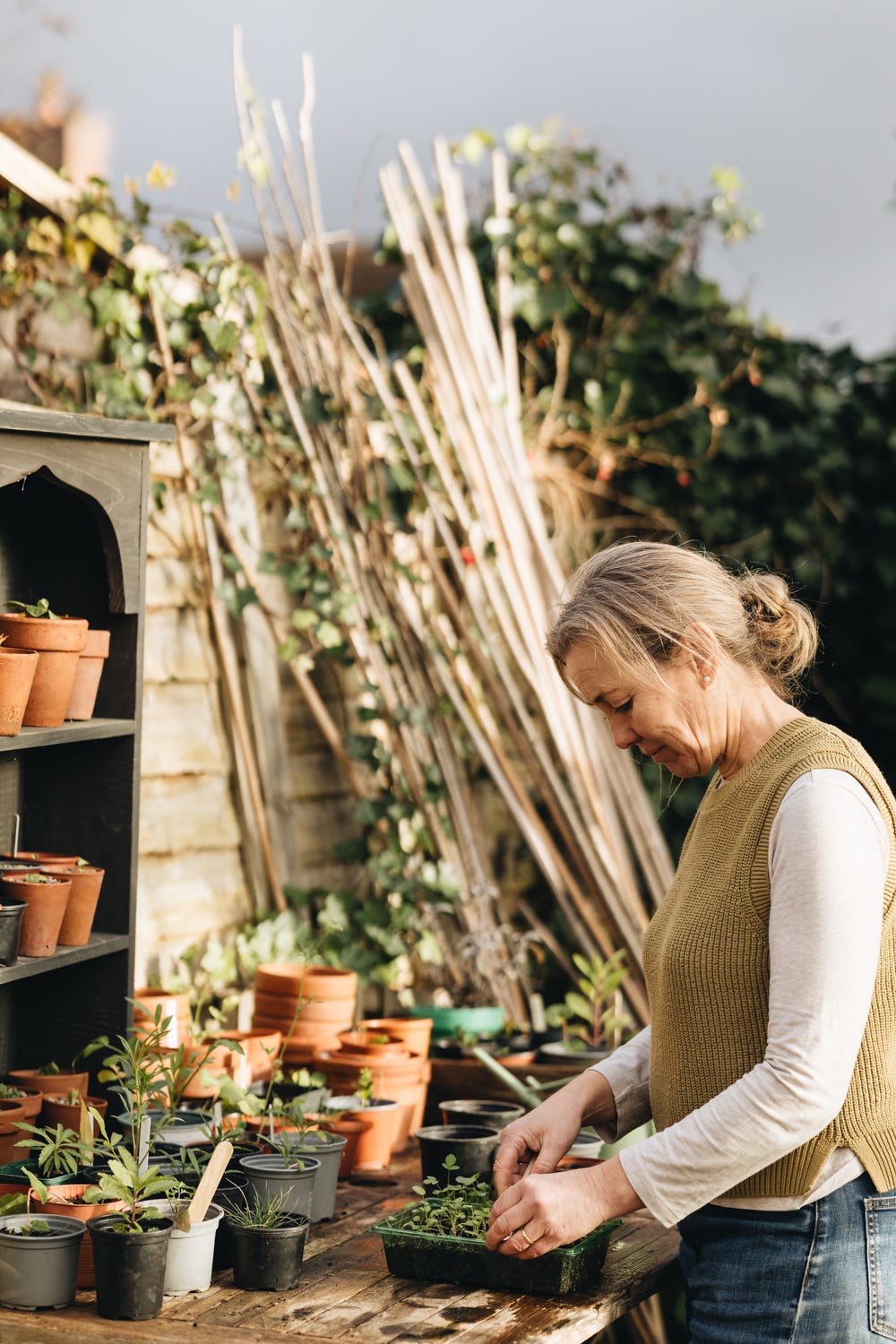


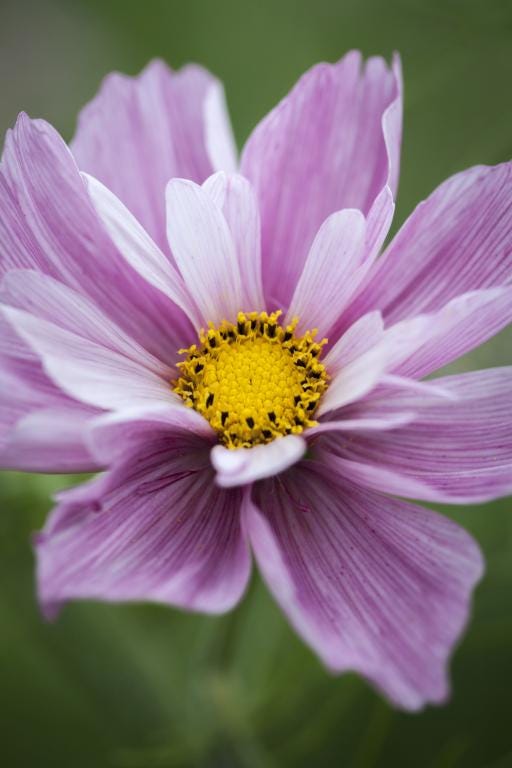



This was a wonderful read! So helpful & you are so right, 20 minutes here & there more than enough!
hello Clare, just to say thank you for your brilliant talk yesterday. So inspiring. The book is a triumph. Wonderful. I've just returned from a year gardening on Tresco and so excited to get back to the plants I missed. Would it be possible to submit a feature idea to you for the magazine? I have written a memoir about becoming a gardener after the loss of my only child. I would love it if you could read a couple of extracts. Thank you, beautiful writing. Jessica